Writer Grace Hill
Photographer Brenna Zumbro
[dropcap]M[/dropcap]any people can describe their lives as being complex, busy and stressful — so much so that they often rely on others to prepare their meals. For some, dining out, fast food and microwaves have become an everyday occurrence and means of survival. If people have one less thing to worry about, like cooking, then isn’t that better in the end?
A growing trend supported by many health-conscious people argues that in fact, it isn’t better. Spending more time cooking and eating quality food actually de-stresses a person. A healthy, home-cooked meal then becomes an event that heals the mind, body and soul, something that busy and stressed out individuals absolutely need.
This finding would suggest, then, that more time should be spent in the produce aisle. However, to truly retrain the way the mind thinks about food, one must look beyond the grocery store and take a much different approach to selecting what to eat. An approach that provides a deeper connection with the Earth’s bountiful crops. This can be done by selecting foods directly from local farms.
Facts about Arizona farms (from the Arizona Farm Bureau, azfb.org)
• Arizona agriculture is a $17.1 billion industry, with more than 15,000 farms and ranches.
• Most farms in Maricopa County are less than 10 acres.
• Dairy is Arizona’s leading agricultural product.
• Yuma County is known as the “Winter Salad Bowl Capital.” They produce almost all of the
veggies consumed in the United States during the winter months.
• Pinal County is home to one of the few remaining sheep ranches that herd their sheep to
Coconino County by foot using the historic sheep driveways in the state.
• Arizona ranks second in the U.S. in head lettuce, leaf lettuce, romaine lettuce, cauliflower
and broccoli production.
Both large and small farms offer a myriad of seasonal items that not only taste better but are nutritionally better for us. Since they do not require shipping, individuals can eat produce at its ripest and freshest. Even during the colder months, while other states deal with freezing temperatures, local farms are able to grow an abundance of produce. In addition, farms provide access to animal products, such as meat, eggs and milk.
Of course, these foods can be found at the grocery store. However, purchasing directly from local farms encourages communication between the community and the farmers. This relationship provides consumers with an understanding on what, how and when food grows best on the farm. It also communicates what role the farm plays in sustainable agriculture. Ultimately, if a person wants to know what they are eating, then purchasing directly from local farms makes the most sense.
If a trip to a local farm seems too large of a task, then look to alternative resources for local food. Community-supported agriculture (CSAs) and farmers markets bring the food closer to home. Some CSAs even deliver food directly to your doorstep. Additionally, many local butcher shops sell only sustainably-raised meats from local farms, instead of factory-farmed meats. And getting farm fresh food doesn’t mean that dining out can’t be an option any longer. Certain restaurants now offer a farm-to-table experience, where they only provide menu options from local food sources.
With the growing desire to return to more natural ways of living, now makes for a perfect time to get to know the local farms and pick food that will nourish the body. Don’t think of it as something that should be done; think of it as something that must be done. It’s time to heal the mind, body and soul.
Share your favorite local farm experiences with our Images Arizona Facebook or Instagram pages using the hashtag, #iamAZproud.
facebook.com/imagesaz
instagram.com/imagesaz
Brenna Zumbro
Hometown: Payson
Current: Flagstaff
Professional experience: When she was a high school senior, Brenna received her first camera from her grandmother for Christmas. In college, she studied journalism, and from there went to photography school per the recommendation of a professor. She graduated from the prestigious Brooks Institute of Photography in 2008, after studying under National Geographic photographer Chuck Plate. With Chuck as her inspiration and her studies under her belt, Brenna has been building her business ever since
Why is it important to you to document farms in photographs? “I want people to know where their food comes from and show how much work goes into the process. I want to give the food and the people who grow it value, so that people start to support local farming.”
Describe your favorite farms to photograph and/or your favorite farm photograph? “It all depends. All the farms I’ve been on have been unique for different reasons. The largest farm I’ve photographed was Duncan Family Farms. It’s pretty amazing how much they grow. From the technology they use to the people they employ, it was pretty amazing. The most impressive part was that Arnott, the owner of the farm, still spends time in the field and knows the people who work for them. For a different reason, I love Rabbit Run Farm and others like it. They are small farms and the people on them work harder than anyone I know. They really care about what they produce and are always trying to improve.”


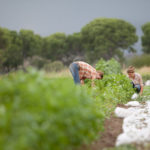


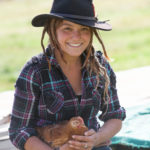

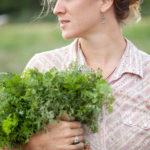
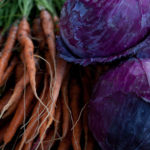
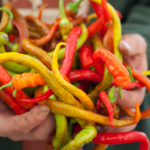






Comments by Admin